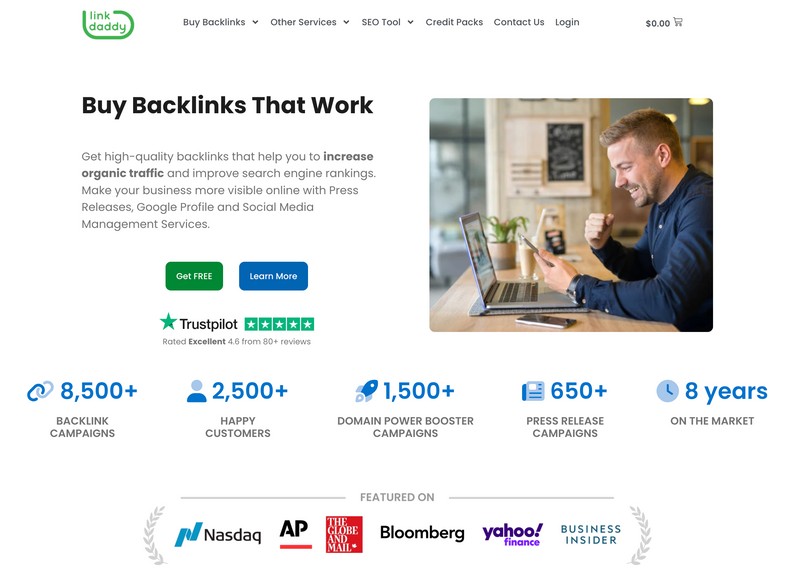A Practical Method to Applying Cloud Solutions for Maximum ROI

Assessing Current Framework
When examining the feasibility of implementing cloud services for optimum roi, the initial action involves examining the existing facilities in location. linkdaddy cloud services. Understanding the existing hardware, software program, network capacities, and storage space systems is critical to establish the compatibility and combination needs for migrating to the cloud
Evaluation of the existing facilities involves carrying out a detailed audit to determine staminas, weak points, and prospective locations for enhancement. It is vital to evaluate factors such as web server ability, information safety procedures, redundancy procedures, and scalability choices. By gaining a clear understanding of the current state of the framework, organizations can efficiently plan and plan the change to cloud solutions.
Moreover, assessing the existing facilities makes it possible for organizations to straighten their cloud fostering approach with their certain needs and goals. This examination supplies important understandings right into optimizing source utilization, improving efficiency, and making certain seamless combination with cloud remedies. Inevitably, a complete evaluation of the existing infrastructure lays the structure for a successful cloud application that makes the most of roi.

Identifying Organization Demands
Recognizing the organization needs is necessary to tailor the cloud solutions effectively. By conducting complete interviews, surveys, and analysis of existing operations, it is feasible to identify locations where cloud solutions can offer the most considerable impact.
By lining up the capacities of cloud services with the details demands of the service, business can ensure that their investment in cloud technology provides optimum return on investment. By resolving these demands in advance, services can avoid costly mistakes and guarantee a smooth transition to the cloud environment.
Selecting the Right Cloud Service copyright
Picking the suitable cloud service supplier is a critical decision that can considerably affect the success of a business's cloud adoption strategy. When picking a cloud company, numerous variables need to be thought about to ensure that the picked service provider lines up with the company's demands and goals. It is vital to assess the company's credibility, reliability, security steps, compliance qualifications, and scalability alternatives.
Online reputation plays an important role as it shows the supplier's record in providing high quality services and meeting client expectations (universal cloud Service). Reliability is one more crucial consideration, as downtime or solution disruptions can have harmful results on company operations. Safety is extremely important when turning over information to a 3rd event, so it is important to evaluate the service provider's safety and security methods and data security procedures
Furthermore, compliance accreditations make certain that the provider abides by industry standards and regulations, which is specifically essential for business running in controlled fields. Last but not least, scalability choices are necessary to fit future growth and transforming service requirements effectively. By meticulously examining these elements, companies can select a cloud service copyright that finest suits their demands and optimizes the return on investment.
Planning Migration and Implementation
To ensure a seamless shift to cloud services, careful preparation and critical implementation of movement and application procedures are vital. The first action in this procedure includes carrying out a comprehensive assessment of the existing infrastructure and applications to establish the compatibility with cloud solutions.
When the movement strategy remains in place, the implementation stage must focus visite site on focusing on workloads based upon criticality and intricacy. This phased approach enables screening and validation at each stage, lessening interruptions and guaranteeing a smooth transition. It is vital to establish clear communication channels and supply sufficient training to employees to assist in adoption and address any kind of problems.
Continuous surveillance and optimization post-implementation are essential to make sure that the cloud services are supplying the expected ROI. Regular performance evaluations and feedback mechanisms can help in identifying areas for improvement and making the most of the benefits of cloud services.
Surveillance Efficiency and Optimization
Efficient monitoring and optimization of cloud services performance play a pivotal role in making best use of ROI and making certain functional performance. By continually monitoring the performance of cloud solutions, organizations can determine prospective issues quickly, enhance resource appropriation, and boost overall system efficiency. Real-time tracking devices enable the tracking of vital efficiency indications, such as action times, resource utilization, and availability, enabling aggressive trouble resolution and educated decision-making.

Moreover, employing anticipating analytics and device discovering algorithms can help organizations forecast future efficiency patterns, expect possible bottlenecks, and proactively maximize cloud resources. Constant efficiency monitoring and optimization not just enhance the customer experience however likewise add to set you back savings review and boosted ROI in the future.
Verdict
In final thought, the effective application of cloud services needs an extensive evaluation of current facilities, recognition of business demands, selection of the ideal cloud service company, precise preparation for movement and implementation, and constant tracking for efficiency optimization. By following these actions vigilantly, organizations can maximize their roi in cloud services and attain higher effectiveness and dexterity in their procedures.
In today's fast-paced service environment, the implementation of cloud solutions has come to be an essential factor in enhancing functional efficiency and driving significant return on investment (ROI) By meticulously examining current infrastructure, identifying certain service needs, picking the ideal cloud service company, and carefully planning the movement and implementation procedure, organizations can position themselves for success in the cloud. Understanding the organization demands is crucial to customize the cloud solutions properly. By straightening the abilities of cloud services with the particular needs of the service, firms can make certain that their financial investment in cloud innovation delivers optimum return on financial investment.Picking the optimal cloud solution company is a critical choice that can browse around here substantially impact the success of a firm's cloud fostering approach.